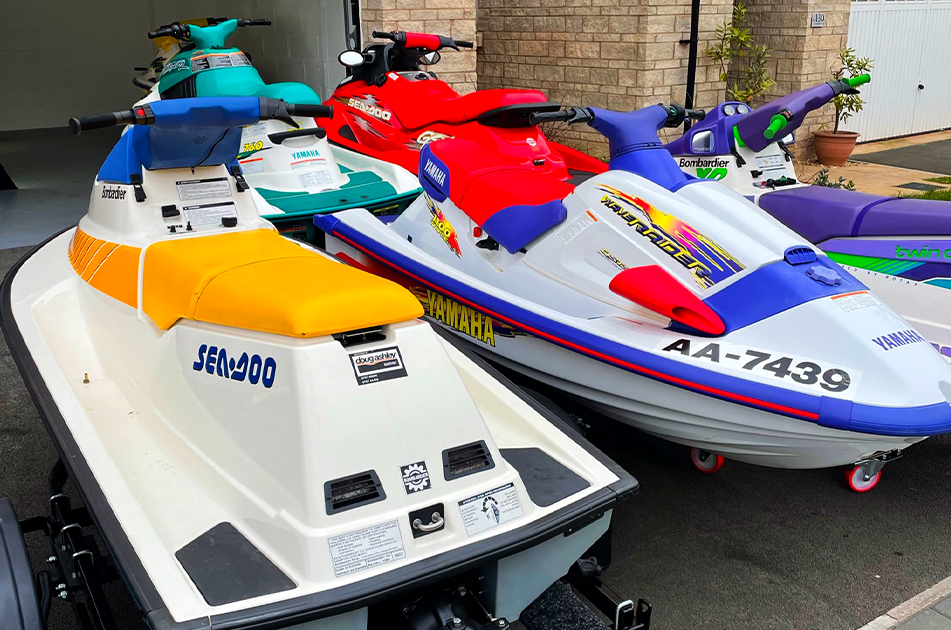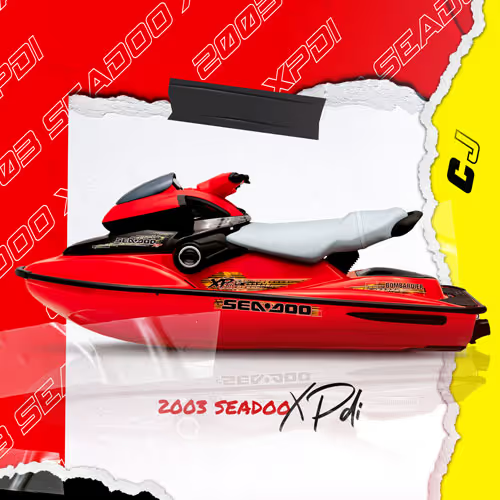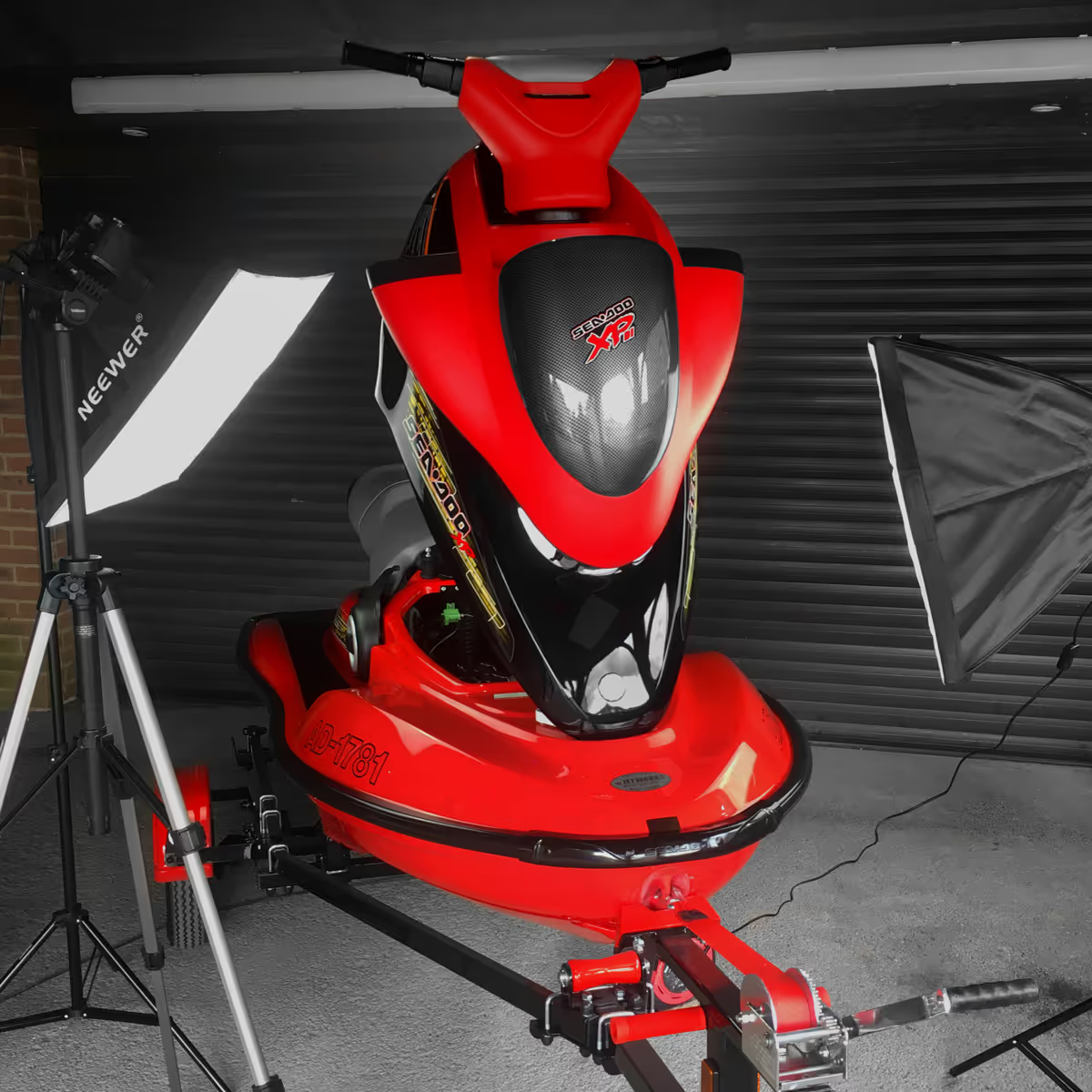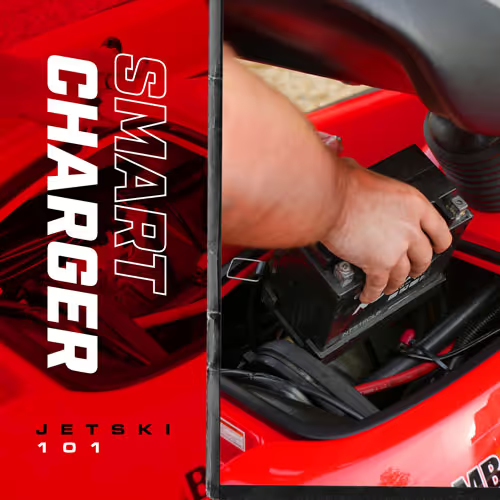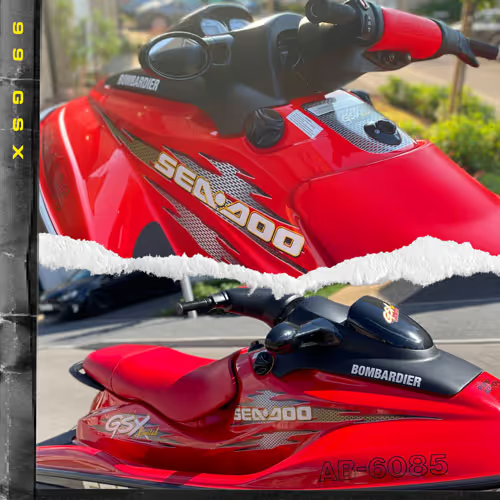How to Find a clean classic - 2-Stroke Jetski Buying Guide
Buying a clean 2-stroke jetski requires careful inspection. Look for low hours, fewer owners, and a clear service history. Check for a healthy engine with a compression test, and inspect the hull and pump for damage. Ask about any rebuilds and listen for abnormal noises. A well-maintained classic will show signs of care, so don’t rush—take your time to find the right one. Keep the classics alive!
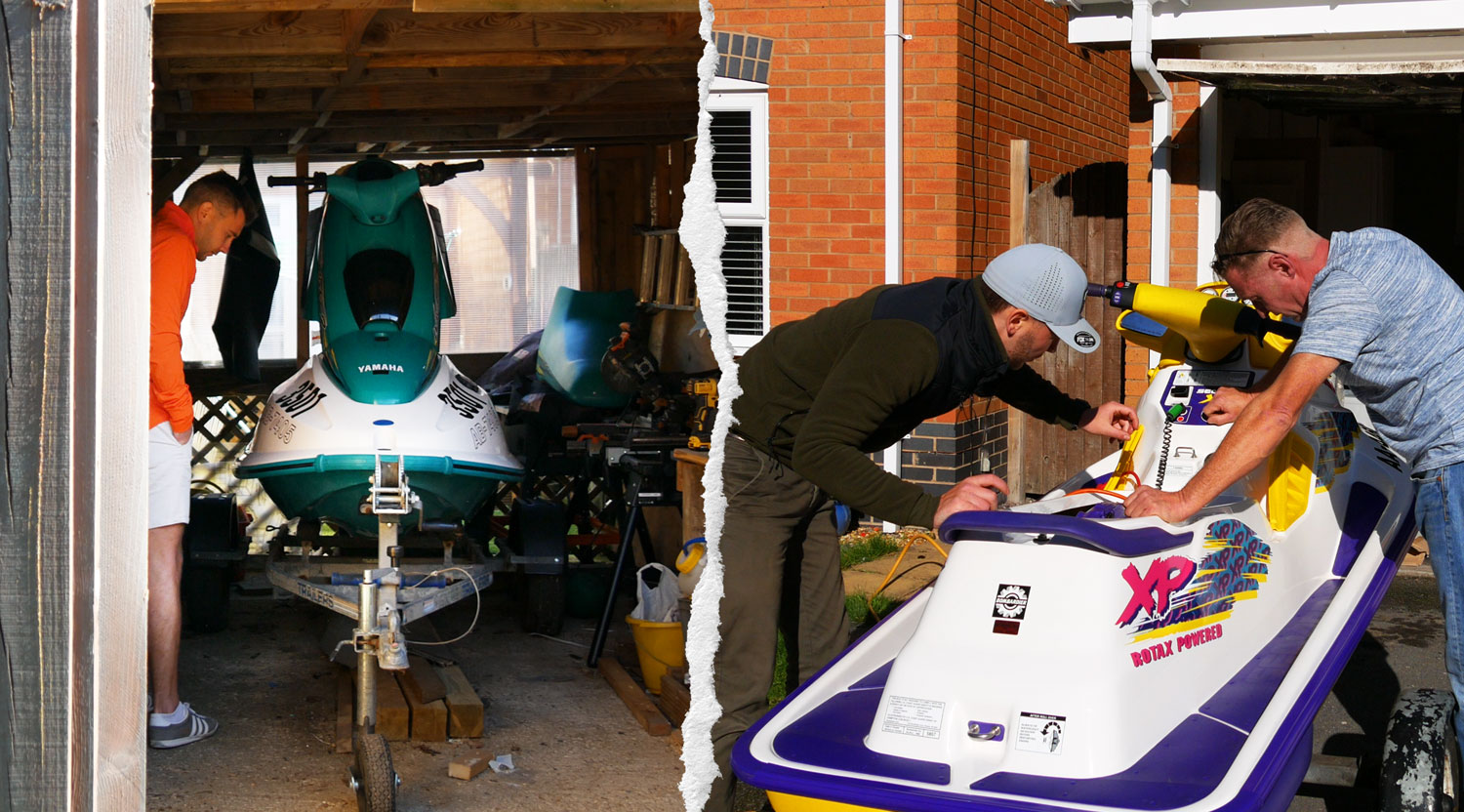

However—and this is an important "however"
When it comes to buying an old 2-stroke PWC, it can be one of the most rewarding experiences when done correctly. However—and this is an important "however"—there are things to be aware of. It's simply part of the territory that 2-strokes require a whole different level of attention to detail compared to buying 4-strokes and newer PWCs, essentially if your on the hunt for a clean example!
Below, I’ve put together a checklist that I go through with every ski I look at. I use this guide when browsing listings and talking to owners, which helps cut out a lot of wasted time. Typically, if an eBay, Facebook Marketplace, Gumtree, or similar listing doesn’t contain much of the information below, it’s either because the owner is oblivious (and is likely the fourth or fifth owner of the ski) or because they’re potentially trying to hide details they don’t want you to know. Either way, you’ll need to dig deeper.
A classic red flag is a very limited description advert, missing key information about the PWC itself but includes a line to the effect of, “trailer bearings recently done.” I don’t know why any seller who lead with this as a unique selling point to buy, if other key information is missing from the advert. Focusing on details other than the PWC itself is a red flag. If a listing is missing key information such as the hours, number of owners, compression, and so on, dig deeper and ask the harder questions. They are trying to take your attention to other things such as 'wheel bearings', and sadly this is a common technique of shady sellers...These sort of tactics are what can catch out new buyers of PWCs.
Let’s get into it. Remember, these are just top-level checks. Every ski and brand will have specific differences to look out for. For example, Sea-Doo has different checks compared to Yamaha, and vice versa.
Key Points to Check When Buying a 2-Stroke PWC
1. How many owners has the PWC had?
In my opinion, fewer owners are better. When dealing with older skis (up to 30 years since their manufacture date), having fewer owners makes it easier to trace the ski’s history, usage, and maintenance.
Note: If a ski is advertised as “one owner,” don’t take it at face value. With skis this old, some sellers may claim this even when they aren’t the first owner. Always ask, “Do you have the original paperwork and owner’s manual?” A true one-owner ski usually comes with this paperwork as a point of pride. It doesn't necessarily mean a ski isn't a clean example if its had 1,2,3 owners, its more a case of how straight the seller is being. If they can't answer simple questions like 'how many people owned it before them', this should be alarm bells as its representative that A) they didn't care enough to find out from the last owner or B) they know how many owners and choosing to hide this for some reason of concern around the craft. If they are being shady about the number of owners or claiming they don't know, call their bluff and say 'no worries' I will run the data tag numbers, at that point they will normally start talking. In my experience of buying 9 classics, even when a PWC has had 3 owners, the genuine owners will just state that straight away, ask yourself why lie.

2. How many hours has the PWC done?
The age-old debate: Is a high-hour ski that’s been used regularly better than a low-hour ski that’s been sitting but is in pristine condition? For me, clean classics should have low hours. A pristine example will rarely have more than 50 hours of use.
Original vs. rebuild hours: Sometimes sellers list hours post-rebuild. For example, a ski might have “30 hours,” but this could mean 150 original hours plus 30 since a rebuild. This means the overall cosmetic wear on the ski is equivalent to 180 hours. Check original components like handlebar grips, footwell matting, seats, ride plates, impellers, etc, as these typically reflect the true wear and tear.

3. All keys, history, and purchase records.
Service history, receipts, owner’s manuals, purchase receipts, keys and data tags are crucial to piecing together the ski’s past.
Check for all lanyards (keys). For older Sea-Doos, DESS keys can cost around £100 and need reprogramming, so when a seller says, 'Yeah you can get a new lanyard off Ebay for £20', challenge it! As the true cost for an OEM lanyard is £100 + programming. It’s always baffled me that owners try to fetch top money for a ski, but see the OEM key as an item that can be just disregarded as not being important to the sale. They will normally present a cheap aftermarket lanyard or a worn out damaged key, as a non topic to why this would decrease the value. Ask yourself, would you buy a car with a key that was non genuine or in terrible shape... the key is a piece of pride to the ownership of the ski (if you’re an OEM clean ski lover that is). Older OEM non-DESS keys are almost impossible to replace, while Yamaha keys are easier to find, as they weren’t encoded.
4. Data tagging.
Data tags are essential for confirming ownership and ensuring the ski isn’t stolen. You can also use them to investigate the ski’s history. If the owner pretends they don’t know or can’t present a data tag document, keep digging as you could potentially be buying a stolen ski, and if you can’t verify the last owner, when you come to re-data tag, if that ski was reported stolen previously, authorities would have the right to seize the ski.
5. Has it been rebuilt?
If the ski has had a rebuild or work completed, ask for receipts. Contact the mechanic who carried out the work if possible. to get their opinion on the quality/volume of work. What I have seen sometimes is you will ring who worked on the ski last and they will say to the effect of, ' Yeah I told John it was going to cost £2500 for XYZ to sort the ski, and he said, bugger that I will sell it'. But they try to use a receipt for what they did pay for, normally a smaller task like a pump rebuild. The sad reality is some prospective buyers see work receipts and think 'great, the owner must be on top of things'.
Poor-quality rebuilds are a risk, especially if done by someone inexperienced. Just because a seller claims it’s had a “top-end rebuild”, doesn’t mean it was done correctly. The PWC world is full of 'back yard Brians' that think they understand what they are doing, but a lot of the time the work they do has an adverse effect. The XPDI is a perfect example of this, this was an engine that with the right mechanic who understood the dos and don’ts, kept going and going, whereas in the wrong hands you are on a slippery slope to that DI never running right again. I call these guys the 'wanna be tuners'. You meet them at the lake, they claim they know everything about every engine, then you scratch below the surface and they are winging it, and you foot the bill. Look for trusted workmanship.
6. Compression check readings.
- A compression test is vital to assess the engine’s health.
- Remove both spark plugs.
- Ground the plug caps to prevent electrical problems.
- Screw the compression tester into one plug hole.
- Hold the throttle wide open and press the start button. Watch the gauge and note the reading when it peaks.
- Repeat for both cylinders.
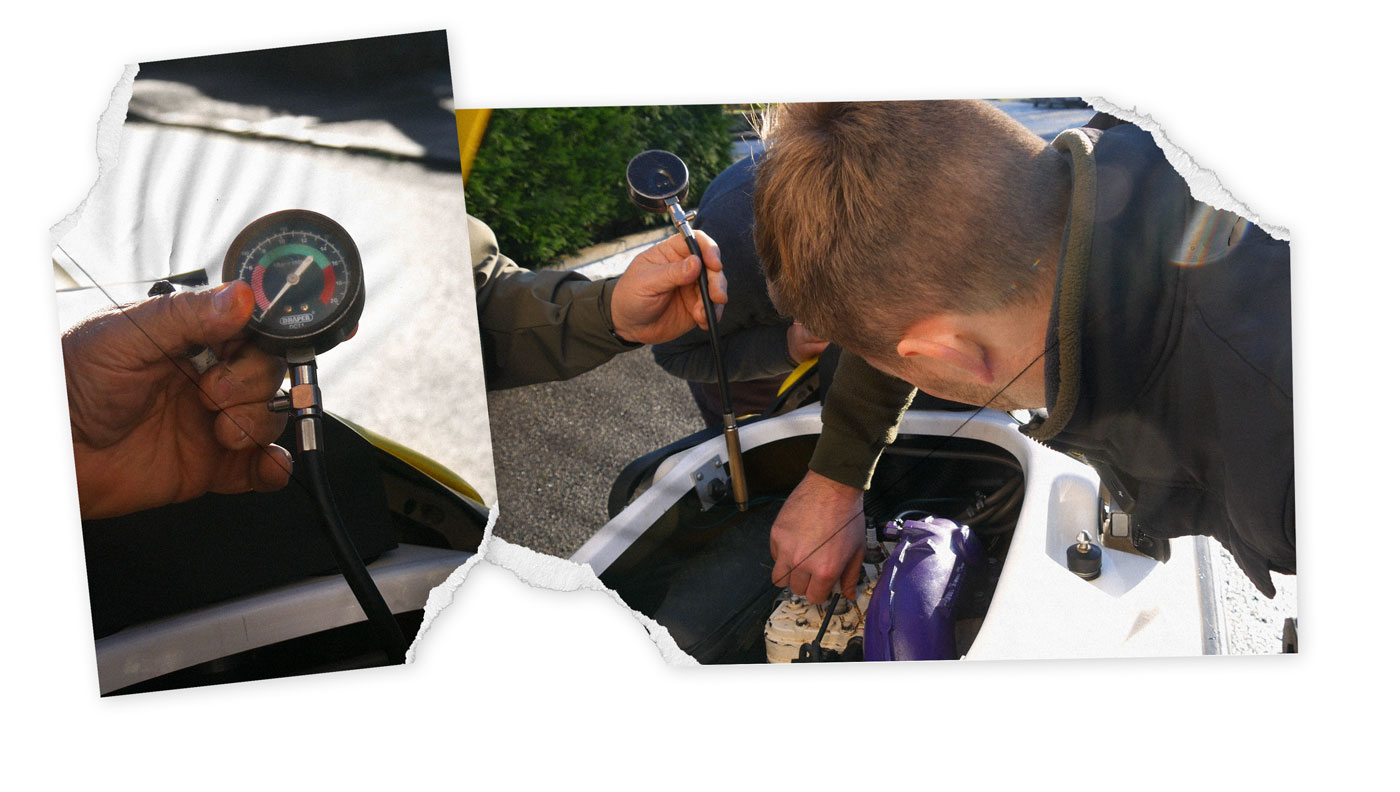
As an example, if the manufacturer’s PSI rating is 150, anything below 90 PSI or significant differences between cylinders (e.g. 140 vs. 80 PSI) indicates the need for a rebuild.
7. Last service and general maintenance.
Even low-hour examples need recommissioning if they’ve been sitting for a long time.
Recommissioning an 2-stroke involves draining and cleaning the fuel tank, replacing old fuel lines with ethanol-resistant ones, cleaning or rebuilding the carburetors, inspecting and replacing spark plugs, testing compression to assess engine health, flushing and checking the cooling system for blockages, replacing the jet pump oil, inspecting the impeller and wear ring for damage, verifying the condition of the rotary valve and timing, lubricating moving parts such as the throttle and steering cables, checking the battery and electrical connections, and ensuring the oil injection system or premix setup is functioning properly before testing on the water.
8. Does it run well?
To determine if the old 2-stroke runs well by conducting a cold start—check that it starts easily without excessive cranking or choke use. Listen for a smooth idle without stalling, bogging, or unusual noises like knocking or grinding. Rev the engine briefly (out of water, no higher than 4,000 RPM) to ensure it responds quickly without hesitation or smoke that smells burnt (beyond normal 2-stroke exhaust). Request a water test if possible; if the seller refuses, consider this a red flag. On a water test, it should accelerate smoothly, reach top RPMs (around 6,800-7,000 RPM), and not overheat. Note any performance issues that could signal carburetor, compression, or cooling system problems.
9. Steering cables and overall cable condition.
Tight or sticky cables may need replacing. Don’t fall for excuses like, “It just needs to be ridden” or “It just needs lubrication.” Cables should move freely, and lubrication is ineffective for sealed cables.
10. Do all dials and features work?
Inspect all dials and features to ensure they work properly. Malfunctions can be costly to repair (e.g., a new speedometer can cost £300). Check the speedometer, tachometer, and fuel gauge for accurate readings when powered on or running. Test the trim system to ensure it adjusts the nozzle smoothly, and verify the operation of the bilge pump or siphon system. Inspect the VTS (Variable Trim System) buttons and see if the trim gauge responds. Test the lanyard safety switch (DSA or DESS) to ensure it shuts off the engine when removed. Verify that any lights, buzzers (e.g., overheat warning), or other controls like the start/stop button function correctly. Non-working features might indicate electrical or sensor issues.
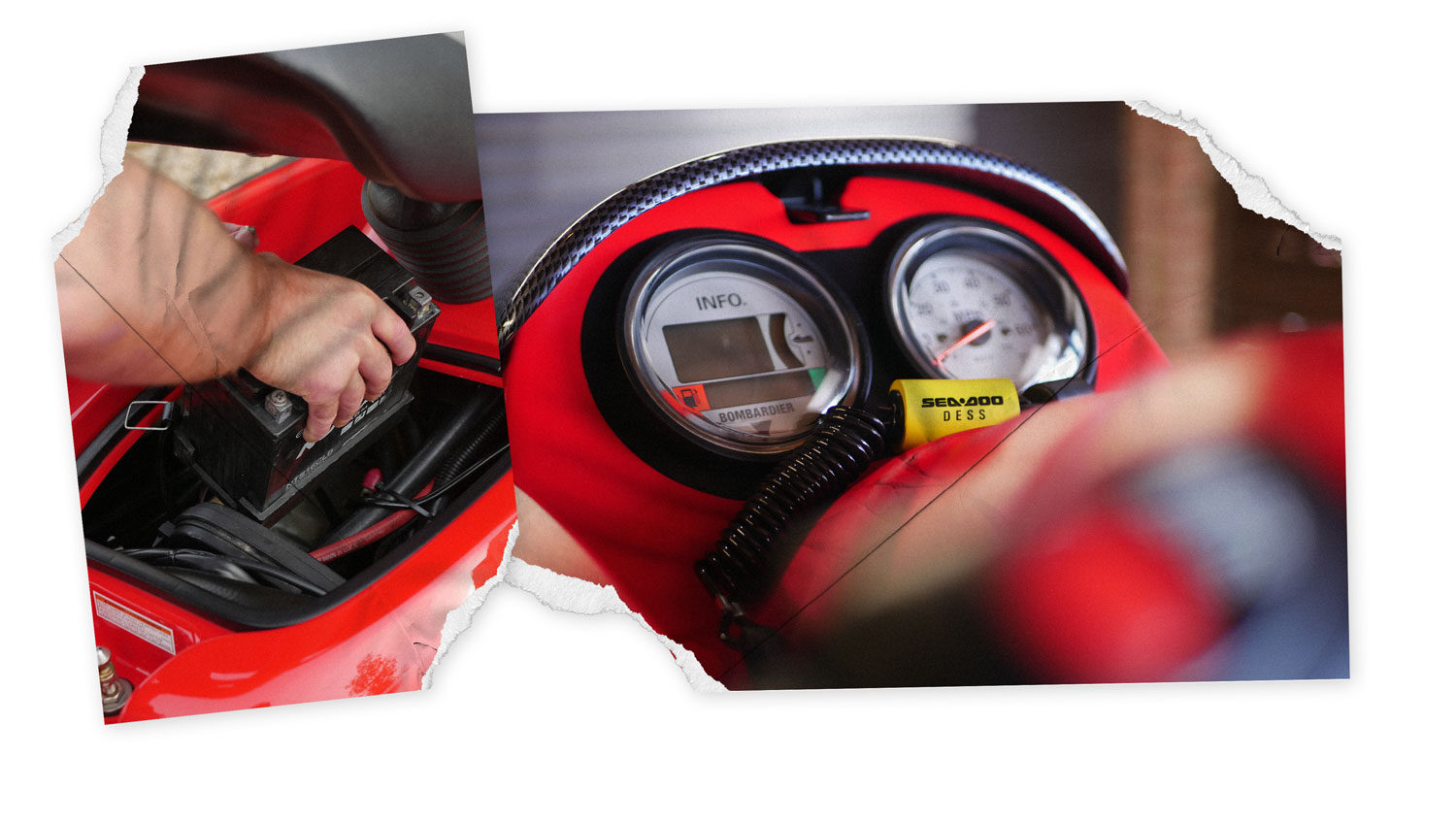
11. Pump assembly condition.
Ask about the pump and impeller condition. A worn wear ring can reduce performance but is an inexpensive fix. Inspect the intake grate and ride plate for excessive wear, as this may indicate frequent beaching.
Check the impeller for damage, such as bent or chipped blades, which can reduce performance. Examine the wear ring for excessive clearance or scoring; a tight clearance between the impeller and wear ring is crucial for proper thrust. Spin the driveshaft by hand to ensure it moves freely without grinding or wobbling. Inspect the pump housing for cracks or damage, and check for any signs of water intrusion, such as milky or contaminated pump oil. Also, verify the condition of the carbon seal or driveshaft seal for leaks, as these are common wear points. A damaged or worn pump assembly can lead to cavitation and poor acceleration.
12. Hull condition.
Inspect the hull for cracks, chips, and fiberglass damage. Light marks from trailers are normal, but excessive damage can be a sign of neglect.
13. Engine bay condition.
A clean engine bay is a good indicator of proper maintenance. A dirty bay suggests neglect...
On the day of purchase, thoroughly inspect the engine bay for overall condition. Look for signs of oil or fuel leaks, which can indicate issues with hoses, gaskets, or seals. Check the fuel lines for cracks, brittleness, or swelling, particularly if they are the old-style gray Tempo lines known for degrading. Inspect the oil injection lines for secure connections and wear, ensuring they aren't brittle or leaking. Examine the engine mounts for cracks or looseness, which could cause misalignment. Look for corrosion on electrical connections, grounding points, or the starter motor. Ensure the bilge area is clean and free of excessive water, debris, or corrosion. A clean, well-maintained engine bay suggests better overall care and fewer hidden issues.
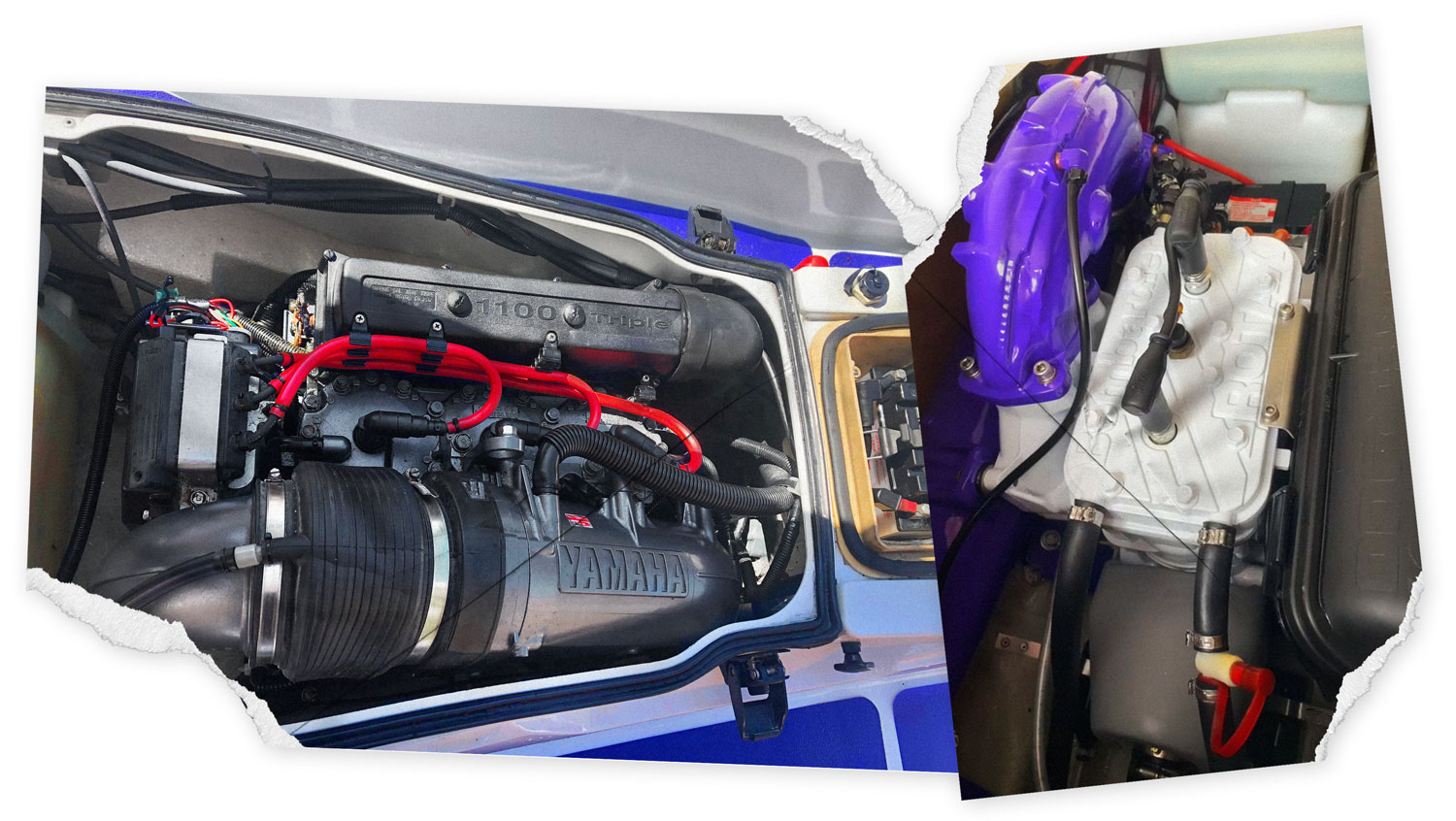
14. Overall cosmetic condition.
These are easy to inspect and can indicate how well the ski has been cared for.
Evaluate the overall cosmetic condition of the Ski. Inspect the hull for cracks, deep gouges, or repaired areas, especially around the keel and intake grate. Check for signs of delamination, which can appear as bubbles or separation in the fiberglass. Examine the gel coat for scratches, fading, or chalkiness, as these indicate UV damage. Inspect the seat for tears, sun damage, or waterlogging. Look at the handlebars, footwells, and trim for wear or damage from regular use. Check decals and graphics for peeling or fading, as these often reflect overall care. While cosmetic flaws don’t affect performance, they can indicate how well the ski was maintained and may impact its resale value.
15. Winterization and storage.
Skis that have been properly winterized and stored in garages are far more likely to be in good condition. Avoid skis that have been stored outdoors for long periods.
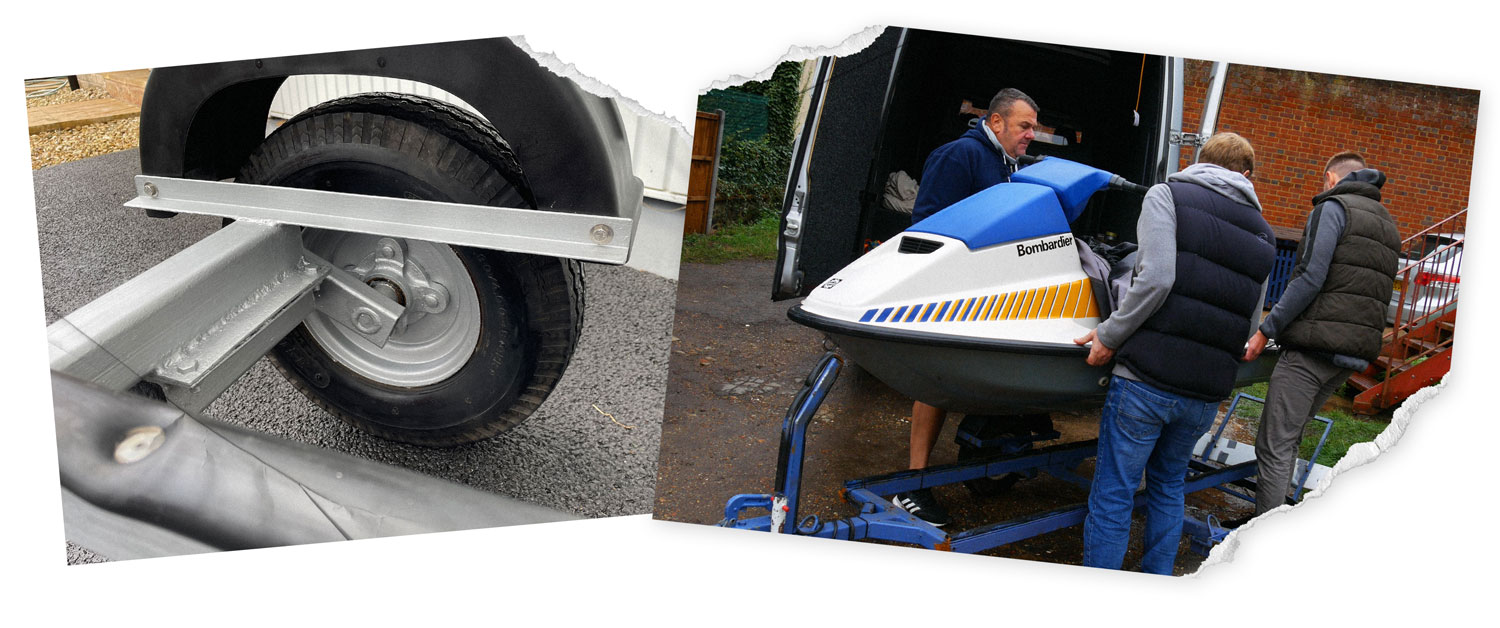
16. Trailer condition.
Trailers aren’t the main focus, but if buying one, check the hubs, winch strap, and lights to ensure they’re roadworthy. However, many classic skis deserve a new trailer to complement their condition.
The above is a lot of information, but it’s the bare minimum to consider. Always research the specific model you’re interested in, and don’t hesitate to spend time on forums learning about common issues and maintenance tips.
If you have specific questions, feel free to reach out. Above all, be brave—there are great machines out there.
‘Keeping these classics alive’!


